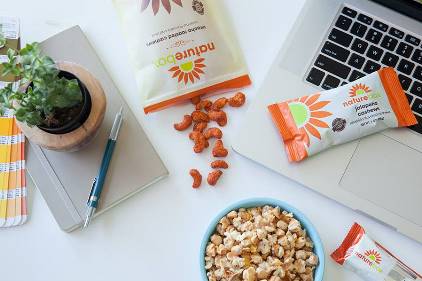
Over the past couple of years, I’ve become a sort of makeup addict. It’s taken awhile, but I have finally learned how to cream contour, apply false lashes and smoke out my eyes. Or, I mean, I at least don’t look like I’m in the circus when I attempt those things.
But I didn’t pick up tips and trick while hanging out with friends, or reading beauty magazines. I learned all of these skills on the best teaching platform there is: YouTube.
I spend hours, days, weeks, following and watching my favorite beauty gurus on the platform, as they carefully explain what lipstick is the IT color (NYX Soft Matte Lip Cream in Copenhagen) and which eyeshadow pallette is the best value (Lorac Pro Palette).
It turns out though, that YouTube has also evolved into something else — the greatest advertising platform there is.
Every time one of those gurus tells me about a new foiled eyeshadow or a pair of falsies, the immediately goes onto my “I want these things” list in my phone. You know, so I can keep track of all the stuff I’m going to buy when I either win the lottery or become a world-famous author.
I mean, yes, in the back of my mind, I know that most of the products they talk about are paid sponsorships. It’s just that I spend so much time watching their videos that they seriously start to feel like one of my friends. And friends have always been the best people to go to for shopping advice. I mean, friends wouldn’t tell you about something if it’s wasn’t legit, right?
Which brings me to food.
It turns out, beauty gurus aren’t just telling everyone about lip liners and powder foundations, they’re also happy to share their favorite detox teas, healthy snacks and delicious sweets with you. And smart companies are learning how to tap into that.
Take NatureBox for example. One of my very favorite YouTubers WhatWouldLIzzyDo can’t stop talking about them. She mixes in her favorite selections from the healthy snacks company between her suggestions for long-wear foundation and good crease colors. And a quick “NatureBox” search on YouTube brings up pages upon pages of videos showing YouTubers unboxing their latest Nature Box shipment.
The strategy seems to be working for NatureBox.
This week they announced $30 million in Series C funding, which comes on the heels of the company's April 2014 $18 million Series B round, bringing NatureBox's total funding to nearly $60 million.
The company says it will use latest round of funding will be used to support its aggressive expansion plans as it prepares to bring its direct-to-consumer model to new categories, channels, and markets.
Of course, NatureBox’s business model is also a huge factor in its success. It’s a direct-to-consumer subscription service. So it’s members pay a monthly fee, pick out their favorite treats and then wait for them to arrive on their doorstep each month.
It’s kind of like the Avon but for snacks, and in 2015. No middle men (or women), just friends telling friends about something they love — or at the very least, something they get paid to love. It’s just that, because of YouTube some of those friends are insanely influential.
If you would have asked someone way back in, say 2007, how companies will someday be using the internet to sell candy and snacks, my guess is they would have focused on something like online grocery shopping and including impulse items on the check-out page. Basically, translating the brick and mortar to the web as literally as possible.
But it turns out, the internet is nothing like the physical stores, and companies who refuse to see that will be left behind.
The web brings with it creative new marketing strategies that give a whole new meaning to the word “endorsements.” And, if the product is good, people will go out of their way to go to company-run websites to purchase the goods.
As more and more commerce moves on to the world wide web, successful candy and snack companies will need to realize that the impulse aisle at the supermarket isn’t going to be the holy grail platform forever. And as marketing and shoppers continue to evolve, the question is, will candy companies be ready for what’s next?

